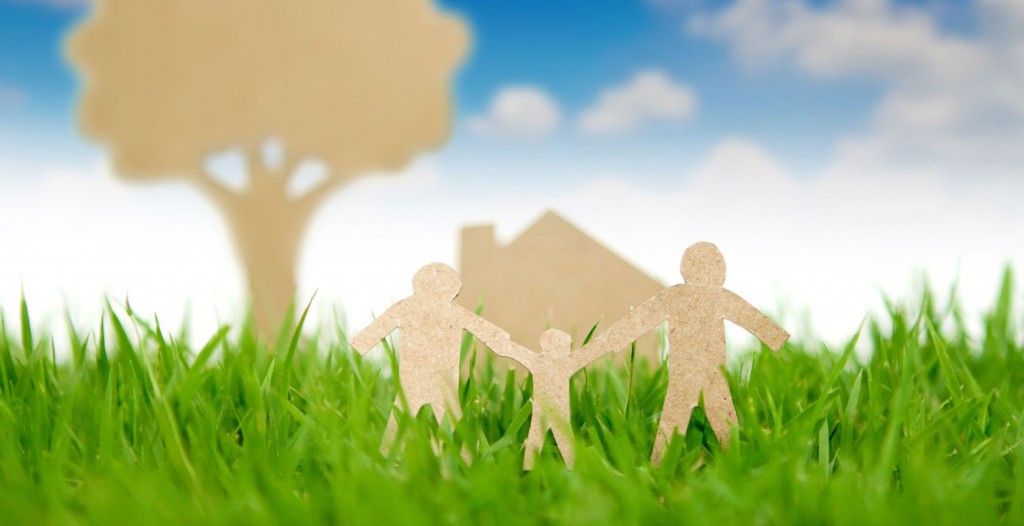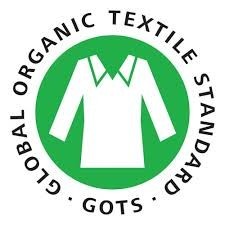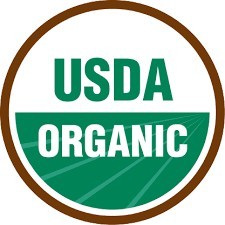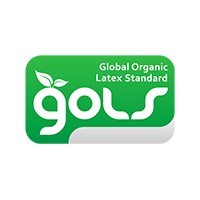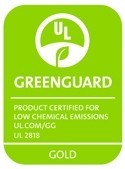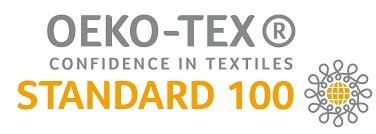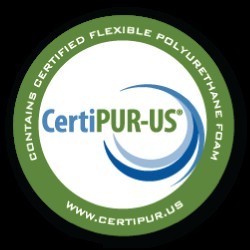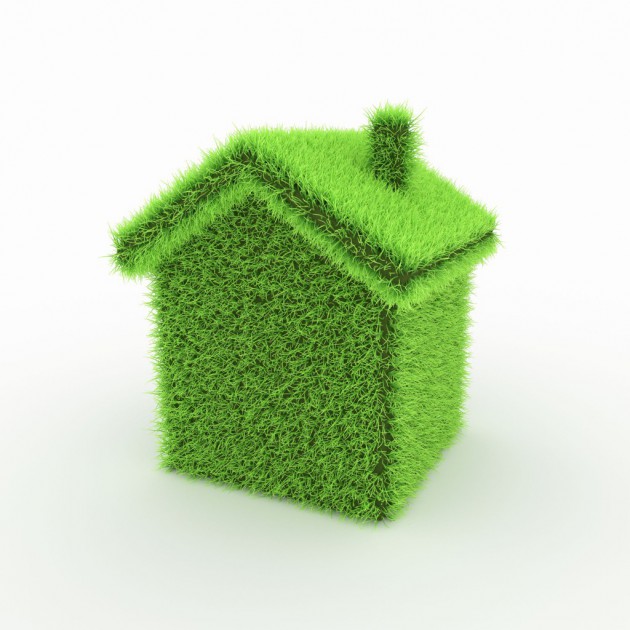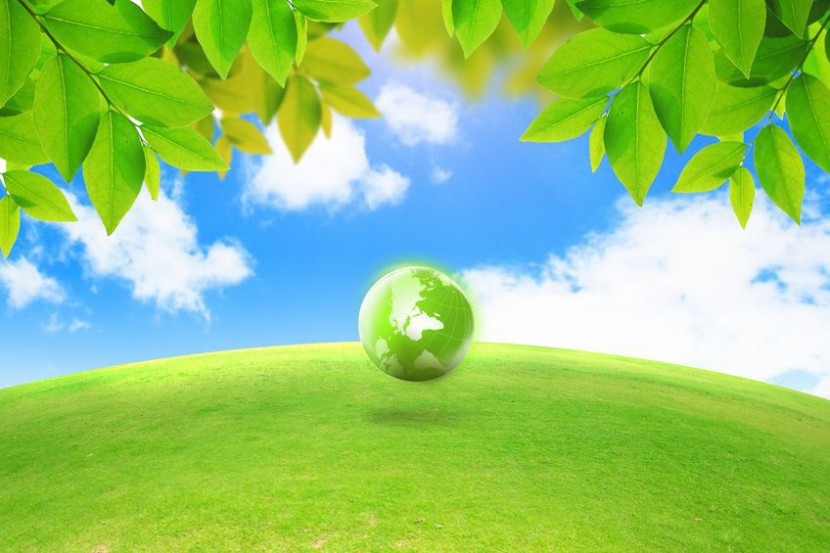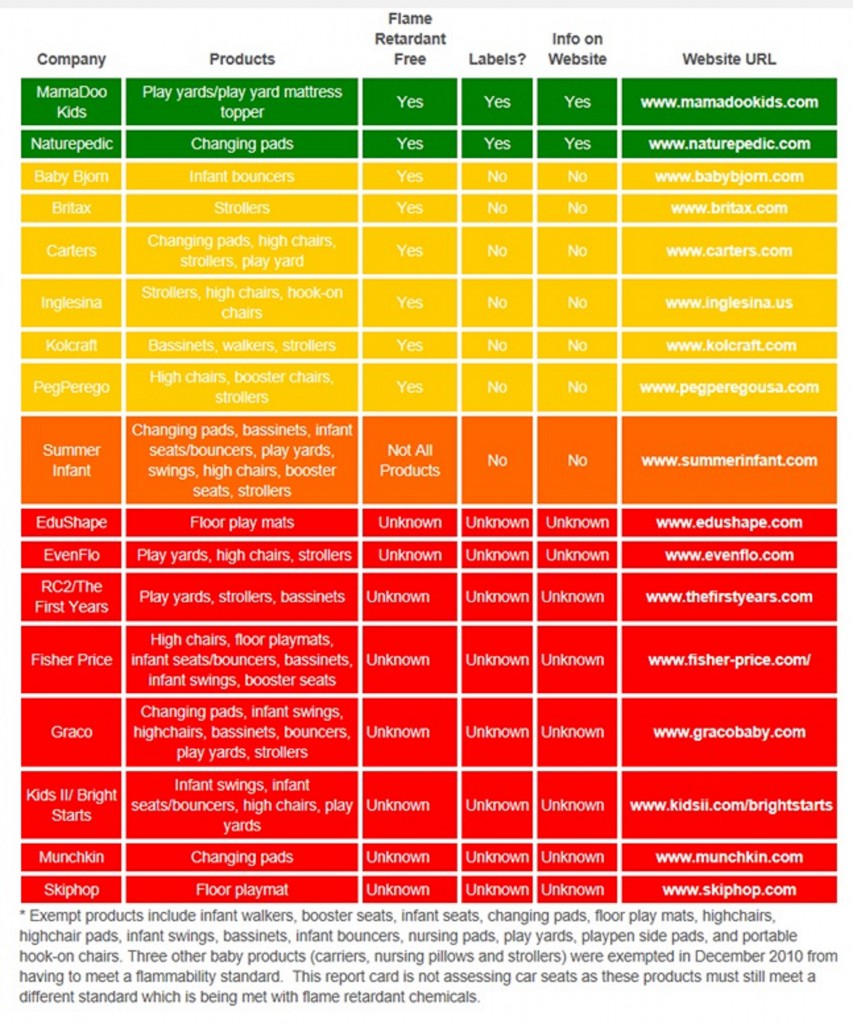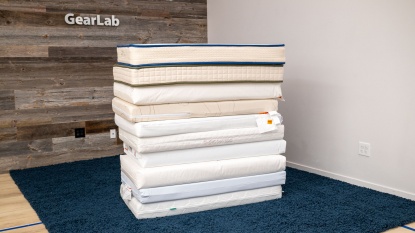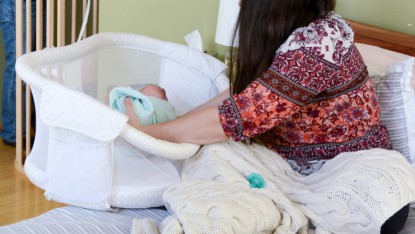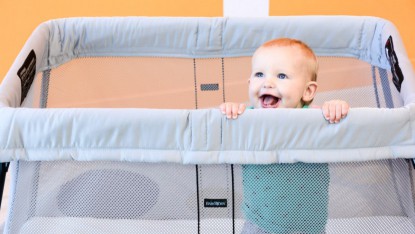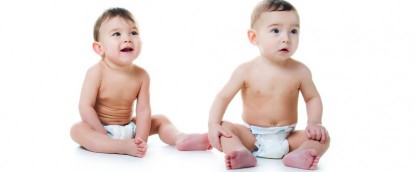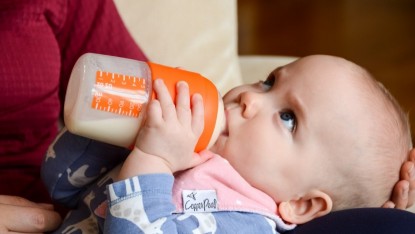In our research of crib mattresses, travel cribs, and bassinets, we came across a variety of certifications, labels, and claims that left us scratching our heads. As educated, experienced researchers in the field of baby gear, we realized that if these things were new and undefined for us, our readers were probably as confused as we were. Thus began a significantly grander project of determining what all of the certifications mean, if they have any merit, what the difference is between an “eco-label” and third-party certification, and what the heck is happening with all this greenwashing. Read on to find out what you should look for, what you should ignore, and how to use the information when choosing your next mattress or baby gear.
Our focus in this article is primarily on claims related to foam and padding used primarily in crib mattresses but also in products like bassinets, travel cribs, and car seats. Because babies spend so much of their time on a favorite crib mattress, issues related to chemical off-gassing from mattresses are of particular concern, and many of the certifications we discuss here relate to mattress materials.
With an ever-increasing plethora of products using environmentally friendly materials, organic components, and claiming benefits for health and the environment, it is time someone pulled the wool off the eyes of the consumer so you can determine what is best for you and your family.
The influx of healthier options is a great thing, and the best way to encourage this is to use your hard-earned dollars to buy the best products you can afford, so manufacturers will continue to increase transparency and create healthier, more environmentally responsible products (especially for babies). To do this, you need to know more about certifications, what to look for, and how to determine the truth in marketing.
Certifications
There are more certifications “out there” than you can shake a stick at depending on what kind of product you are researching. We are going to focus on those we run into the most, but we encourage you to question and research any certification or “eco-label” you find with a critical eye. Some certifications are useful and offer peace of mind, while others mean virtually nothing or could be disguising a potentially harmful material you wouldn't knowingly choose.
Global Organic Textile Standard (GOTS)
GOTS is an international textile processing standard for organic fibers. They cover comprehensive guidelines for ecological and socially responsible textile production of the complete supply chain with independent certification. This certification is the gold standard of organic fibers and definitely one to look for if organic is important to you. This certification means nothing in the manufacturing or processing of the fibers introduces toxic chemicals. Processing also must commit to strict environmental and employment concerns to protect workers and the planet. Notice the clear definitions of their certifications in the quote below.
According to the GOTS website:
A textile product carrying the GOTS label grade 'organic' must contain a minimum of 95% certified organic fibres whereas a product with the label grade 'made with organic' must contain a minimum of 70% certified organic fibres.
The Takeaway?
The website is extensive, and there is much to learn about this certification, but if your product has a GOTS certification, it's a good thing for everyone.
United States Department of Agriculture (USDA) Organic
The USDA governs the farming practices of certain crops, including cotton. While less common than the GOTs certification, you may see a USDA Organic certification. This certification applies to the fiber crops (i.e., cotton) as opposed to the final product itself like you find with GOTS.
From the USDA website:
Organic producers rely on natural substances and physical, mechanical, or biologically based farming methods to the fullest extent possible. Organic produce must be grown on soil that had no prohibited substances (most synthetic fertilizers and pesticides) applied for three years prior to harvest.
Interestingly, on the USDA website, we also read:
This information gives us pause because we saw this certification label on products for baby, including mattresses and mattress pads. What does this mean for you? Probably very little.
The Takeaway?If you see this stamp that is okay, but it doesn't mean the same thing as GOTS and likely should not be used for mattress products, so don't get excited.
Global Organic Latex Standard (GOLS)
Control Union Certifications governs GOLS which is the first global standard for organic latex. GOLS outlines organic requirements for latex products made from raw materials and other non-organic materials. A product needs to “contain more than 95% certified organic raw material” to receive the GOLS certification.
From the GOLS website:
The Takeaway?
This certification is one to look for and essential for latex products. We encourage parents to choose latex products that have the GOLS seal to ensure purity and quality, as impure latex can have negative health implications. Beware of latex listed as “natural,” as this could mean as little as 4% of the product is genuinely natural; if latex is completely natural, it will say 100% natural.
GreenGuard
GreenGuard is a certification provided by UL Environment, a division of UL (Underwriters Laboratories). They certify interior products and materials with low chemical emissions into indoor air during product usage. GreenGuard is a third-party governing body (the ideal situation) that tests and certifies materials used in building products, furniture, and other items to ensure better indoor air quality. Why is a third party important? This delineation is important because it means that UL does not have a bias and will not benefit in any way from giving a product a certification label.
The certification means the product has no greater than 1/100 of the currently published ACGIH® Threshold Limit Values (TLVs) and no greater than one-half of California's Chronic Reference Exposure Levels (CRELs). This statement is likely confusing for parents who don't know what these levels are, how they were determined, and how it relates to a baby's health. It is ok if you don't know the details about what this means. In the end, it means that the product has met specific guidelines determined to be safer. And you can feel better about choosing the certified product over those without the certification.
Things to keep in mind about GreenGuard:
GreenGuard conducts product testing for chemical emissions only. They are explicitly evaluating the evaporation of chemicals that act as a gas at room temperature. GreenGuard doesn't consider the production or supply chains; they only test the final product offered for certification.
GreenGuard does not measure the following things:
- heavy metals (lead, mercury, copper, etc.)
- PVC which is not volatile
- phthalates (they test for phthalates for the Children and Schools certification)
The Takeaway?
It is essential to understand that while a GreenGuard certification is a good thing, it isn't the only thing. In short, the certification only means that they did not detect VOCs above a certain level during testing. It does not say that the mattress (or other product) is free of toxins or does not off-gas, only that it meets the guidelines for certification.
Oeko-Tex
Oeko-Tex and Eco-Institut certifications include safety testing for harmful substances and VOCs in materials used to produce certain products. The STANDARD 100 by OEKO-TEX® comes from independent (third Party, woot! woot!) testing of raw, semi-finished, and finished textile products during each processing levels.
From the Oeko-Tex website:- Important legal regulations, such as banned Azo colourants, formaldehyde, pentachlorophenol, cadmium, nickel, etc.
- Numerous harmful chemicals, even if they are not yet legally regulated.
- Requirements of Annexes XVII and XIV of the European Chemicals Regulation REACh as well as of the ECHA SVHC Candidate List insofar as they are assessed by expert groups of the OEKO-TEX® Association to be relevant for fabrics, textiles, garments or accessories. Discussions and developments that are considered to be relevant are taken into account as quickly and effectively as possible through updates to the STANDARD 100 by OEKO-TEX® requirements.
- Requirements from the US Consumer Product Safety Improvement Act (CPSIA) regarding lead.
- Numerous also environmentally relevant substance classes
This certification covers the individual materials and does not test the final product.
For products for babies, the website says the following:
Accordingly, a distinction is made between four product classes:
Product class I:Articles for babies and toddlers up to 3 years of age (underwear, rompers, clothing, bed linen, terry products etc.)
The Takeaway?
The Oeko-Tex certification is one you want. Because it is an independent testing group, you can feel confident they only certify the best as they have no invested interest in the results.
CertiPUR-US
CertiPUR-US is a foam certification alliance comprised and run by those in the foam industry (not a third party organization). This certification checks for the use of banned chemicals and tests for VOCs to a limit defined by foam producers. While arguably better than nothing, this isn't the best as the certifier works in the foam industry and potentially benefits ($$) from the certification of foam.
Comparing CertiPUR testing requirements with those of Oeko-Tex's reveals that the emission limit values are similar. However, CertiPUR does not test for consumption or skin contact, so their tests are not as comprehensive as Oeko-Tex.
We think it is important for consumers to know the following about this organization and the certification:
- The foam industry developed its certification process and guidelines. In our opinion, this a conflict of interest much like the fox guarding the henhouse. Governing its own industry means it is a potentially biased source which could be looking out for its bottom line instead of consumer safety.
- The executive director was involved in the polyurethane industry for four decades. His long-term association with the industry means he is unlikely to be an objective party on foam safety. He is not a scientist, and his resume includes serving as vice president of marketing and sales for Flexible Foam Products Inc.
- Their representative for Communications Counsel has worked with foam suppliers since the mid-1990s on marketing and communications, indicating she earned a living by increasing the sale of foam.
There are some benefits to the CertiPUR certification as it ensures that the following is true:
Made without PBDEs, TDCPP or TCEP ("Tris") flame retardants
Made without mercury, lead and other heavy metals
Made without formaldehyde
Made without phthalates regulated by the Consumer Product Safety Commission
Much of what they look for is already outlawed and shouldn't be in any foam. Also, being certified does NOT mean the product is “safe” or “non-toxic.” It feels intentionally misleading as many consumers might mistakenly believe that the certification means the product is safe as opposed to only potentially safer than uncertified foam.
On the upside, the actual testing process uses a third-party lab. However, in our opinion, because the foam industry created the parameters, the results are less valuable than certifications performed and created by third-party groups who only have consumer safety in mind.
The Takeaway?CertiPUR is an okay certification, but it doesn't mean what most consumers probably think it means. It indicates that the foam meets legal standards for banned chemicals and foam industry defined emission standards for VOCs. It does not say the foam is safe, non-toxic, or does not off-gas. In the end, a certified foam is arguably better than not certified foam, but no foam is better than certified foam. Whenever possible, we think parents should avoid foam altogether.
Reading Labels
It is important that consumers, especially parents looking for baby gear, read labels, and compare materials and chemical use. It is also important that you understand what you are reading, so you can make educated buying decisions based on facts as opposed to greenwashing or misleading language.
Once you've reviewed certifications and read the product's materials list, you should also analyze the product's marketing for suspicious wording or “eco-labels.”
Eco-labels are badges that look similar to certifications, but they don't necessarily mean a product has undergone any testing. They should indicate that a product is generally trustworthy and has demonstrated that they are better for the environment or health than similar products. Unfortunately, sometimes they mean nothing and are just a logo created by the manufacturer or the product's industry for use as a form of greenwashing. This practice is done to mislead consumers without providing any real information to prove that a product is healthy or Earth-friendly.
An excellent example of a useless eco-label and misleading language is the case of the FTC against Moonlight Slumber, LLC a crib mattress manufacturer. The company claimed its mattress was “organic” when over 70% of it was not, and they made up a “Green Safety Shield” certification badge (see above) that they awarded to themselves. The badge means nothing, but only consumers who had the time to research the badge, claim, and mattress would know. The FTC cited the company for the badge and misleading language, and it is the first time the FTC challenged “organic” product claims.
After researching the Moonlight Slumber Mattresses, we still see misleading language designed to make the products appear good for baby and the environment without information to support the claims. For example, the Starlight Simplicity Crib Mattress uses the following marketing:
This statement doesn't say how the mattress is eco-conscious, how it is suitable for a baby's sleep environment, or how it helps the planet. However, in our opinion, the marketing implies that if you are looking for an eco-conscious product, that is good for your baby, then this is the mattress for you. It also seems to say that if you don't buy this mattress, you aren't eco-conscious and you are happy to compromise your baby's sleeping environment. This wording could compel you to buy the mattress for fear of being an uncaring parent.
The description goes on to say:
Some potentially eco-deceptive (and unsupported) wording here is “pure,” "the only thing we add to this mattress is our lovely organic cotton," and “Simply Pure.” The word “pure” often implies there is nothing artificial or chemical added or that a product is non-toxic. The company doubles down saying “we add nothing to this mattress” suggesting (at least to us) that it is chemical-free or that the potential for off-gassing is lower or non-existent. The marketing also mentions the use of organic cotton, which we believe is designed to make the consumer feel good about the cotton on the mattress. In truth, the amount of organic cotton is likely less than 2% of the entire mattress and is only on the edge of the mattress where your baby will never touch. This mattress also claims it contains "natural latex", but the FTC discovered the latex is synthetic and requested that term to be removed from marketing. Last, this product contains polyurethane foam. Pis a petrochemical product with loads of additives, so saying they “add nothing to the mattress,” we believe, is intended to make you forget this.
Are you wondering about a specific eco-label? You can research most eco-labels and what they mean at the Eco-Label Index website.
Greenwashing
Greenwashing is an expression stated or implied about a product designed to evoke assumptions of environmentalist concerns or increased health. Essentially, it is intentionally misleading wording or information that means virtually nothing or is irrelevant in context to the product. Depending on the type of greenwashing, it is not illegal.
There are said to be seven sins in greenwashing designed to mislead the consumer or guide their buying choice with inaccurate information. You can also read more about green shopping on the FTC website which offers tips and tells you what to look for when shopping green.
Natural
Seeing the word natural on a product label might give you the idea that the product only contains materials that occur in nature or are potentially organic or free from chemicals; at the very least you might assume it means the product is “non-toxic.” In reality, the word “natural” is not governed or defined by the U.S. Federal Trade Commission (FTC) that enforces consumer protection laws. In regards to mattresses, there is no agreed-upon (legal) definition of the word “natural,” and a mattress that's advertised as “natural” could potentially include almost anything like polyurethane foam, chemicals, and adhesives, etc. Hm… we suspect that is not what most consumers believe “natural” means.
Eco-Friendly and Green
If you aren't confused already, the FTC doesn't define “eco-friendly” or “green” with regard to mattresses. Without regulation or legal definitions of these words, a mattress that's advertised as “eco-friendly” or “green” can potentially contain a variety of elements that are not good for you or the environment. Essentially, manufacturers can use these words to describe a mattress without backing up the claim with any evidence. Also, the mattress, and the process used to create it, do not have to be good for the environment or your health.
Soy Foam, Eco-foam, Plant-based Foam, Green foam
Polyurethane foam is polyurethane foam. Manufactures use the words above to describe polyurethane foam made with a small amount of plant-based essential oils added to the standard petrochemical polyurethane foam. The addition of these oils does not make the foam, “safer,” less toxic, better for your baby, environmentally friendly, or in any other way better for the environment or humans. These mattresses likely contain chemicals known to impact human health negatively and have a similar if not identical carbon footprint to foam that uses 100% petroleum.
The Takeaway?We believe you should avoid all foam. We also encourage you to avoid purchasing products that use misleading language or greenwashing like this because it essentially rewards the company for knowingly misleading consumers.
Irrelevant Claims
Irrelevant claims are those that are likely true but have little or nothing to do with the product, its production, or it being green or healthy. An example of this includes “renewable resource” in marketing claims. We saw this on products for the “soy foam” or the “eco-foam.” The goal of this marketing is to elicit feelings of environmental responsibility. While it is likely true that the foam contains a renewable resource, it does not mean that the company is active in planting the resource or increasing the production of the plant to replace what they've taken for the product. However, many consumers might assume that using a renewable resource means the product is more environmentally friendly than one that does not use renewable resources, but it doesn't mean this at all.
Another common irrelevant claim is “100% Recyclable” on product packaging. Even if it is true that the package is recyclable, this has nothing to do with the product. It doesn't mean the company is using recycled materials in the packaging or product, and it puts the responsibility on the consumer to recycle instead of the manufacturer. Alternatively, manufacturers can show their passion for the environment with more meaningful actions and statements with something similar to “Made with no less than 80% recycled materials.” This statement means the manufacturer has intentionally taken the responsibility to use more environmentally responsible resources like recycled materials.
What You Can Do
So what is a parent to do when making buying decisions for themselves and their family? Do your research, ask questions, be thoughtful, and do your best. There is so much information out there, and it can be challenging to determine what is true, embellished, or an outright lie. However, you now have the knowledge you need to decipher the code and find the right gear for your baby.
Here is a useful checklist to get you started:
- Look for the certifications that matter, specifically GOTS, GOLs, Okeo-Tex, and GreenGuard. We suggest avoiding foam, so if you see the CertiPUR accreditation, then you know it is foam.
- Read labels and ask questions. If a label doesn't make sense or seems to be missing something, you can call or email the manufacturer to get more details. We find that reputable companies will answer your questions honestly within a few days. If they don't respond or are evasive in their answer, then we suggest buyer beware and looking elsewhere for your needs.
- Be thoughtful and critical of the information you read or receive. Does it make sense? Are you being misled? Is the company being transparent? Have they provided supporting evidence? Did the company even answer your question? An excellent example of a transparent company that we found was Naturpedic. They answer many questions on their website and list all of the materials in a refreshingly open way. For instance, they will tell you they use food grade polyethylenefor waterproofing their mattresses, while other manufacturers will only state that the product has a “waterproof barrier” or they may say what the product isn't as opposed to what it is. After contacting multiple companies about their waterproofing materials, we only received clear, specific answers from about half of them. Some companies didn't answer our questions at all. Some told us what they didn't use, but would not say what they did use. Others tried to confuse the issue by saying what bad things the competition uses while never telling us about their materials. When we approached a specific manufacturer about what they use as a “waterproof barrier,” they responded that they use a “waterproof barrier.” It took over five emails and dropping the BabyGearLab name before they answered with the specific information we requested in our original email.
Conclusion
Now that you know more about certifications and greenwashing, you have the information you need to make better buying decisions for all products, especially baby gear. As a consumer, you have the opportunity to drive manufacturers to be transparent and honest about the products they make. With your buying dollars, you can encourage manufacturers to make better, safer products for your family by choosing to buy healthy, green products with known materials and meaningful certifications.

